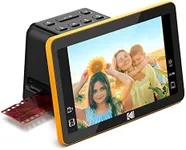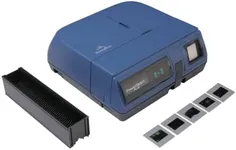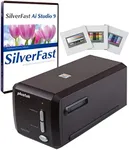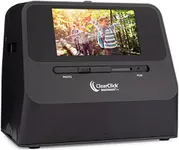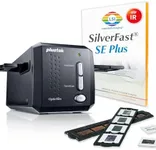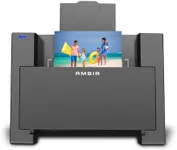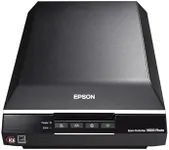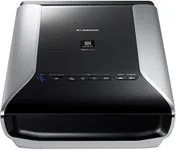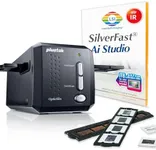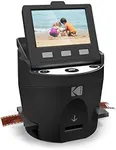Buying Guide for the Best Negative Film Scanners
Choosing the right negative film scanner can be a daunting task, but with the right knowledge, you can find a model that suits your needs perfectly. Negative film scanners are used to digitize film negatives, allowing you to preserve and share your memories in a digital format. When selecting a scanner, consider the following key specifications to ensure you get the best fit for your requirements.ResolutionResolution refers to the amount of detail a scanner can capture, measured in dots per inch (DPI). Higher resolution means more detail and clarity in the scanned images. For general use, a resolution of 2400 DPI is usually sufficient, but if you need professional-quality scans or plan to print large photos, look for scanners with 4800 DPI or higher. Consider your end use: if you need high-quality prints or detailed editing, opt for higher resolution; for simple digital archiving, lower resolution may suffice.
Color DepthColor depth indicates the number of colors a scanner can capture, measured in bits. Higher color depth results in more accurate and vibrant colors in your scanned images. Scanners typically offer 24-bit or 48-bit color depth. For everyday scanning, 24-bit is adequate, but for professional use or if you want the best possible color reproduction, 48-bit is preferable. Think about how important color accuracy is for your scans; if you need true-to-life colors, go for higher color depth.
Dynamic RangeDynamic range measures a scanner's ability to capture the range of tones from the darkest shadows to the brightest highlights, expressed as a Dmax value. A higher Dmax value means better detail in both dark and light areas. For general use, a Dmax of around 3.0 is sufficient, but for professional-quality scans, look for a Dmax of 4.0 or higher. Consider the type of negatives you have; if they have a lot of contrast or detail in shadows and highlights, a higher dynamic range will be beneficial.
Scanning SpeedScanning speed refers to how quickly a scanner can digitize your negatives. Faster scanning speeds can save you time, especially if you have a large number of negatives to scan. Scanning speed is usually measured in seconds per frame. If you have many negatives to scan, look for a scanner with faster speeds to make the process more efficient. If you only have a few negatives or don't mind waiting, scanning speed may be less critical.
Software CompatibilitySoftware compatibility is important because it determines how easily you can edit and manage your scanned images. Some scanners come with their own software, while others are compatible with third-party programs. Ensure the scanner you choose works with your preferred software and operating system. If you need advanced editing features, look for scanners that are compatible with professional software. If you prefer simple editing, basic software compatibility may be sufficient.
ConnectivityConnectivity options determine how you can connect the scanner to your computer or other devices. Common options include USB, Wi-Fi, and Bluetooth. USB is standard and reliable, while Wi-Fi and Bluetooth offer wireless convenience. Consider how you plan to use the scanner; if you need to move it around or prefer a clutter-free workspace, wireless options may be better. If you prefer a stable and fast connection, USB is a good choice.
Size and PortabilitySize and portability refer to the physical dimensions and weight of the scanner. If you have limited space or need to transport the scanner frequently, look for a compact and lightweight model. Larger scanners may offer more features but can be cumbersome. Think about where you will use the scanner and how often you need to move it; if space is tight or you need portability, opt for a smaller, lighter model.


